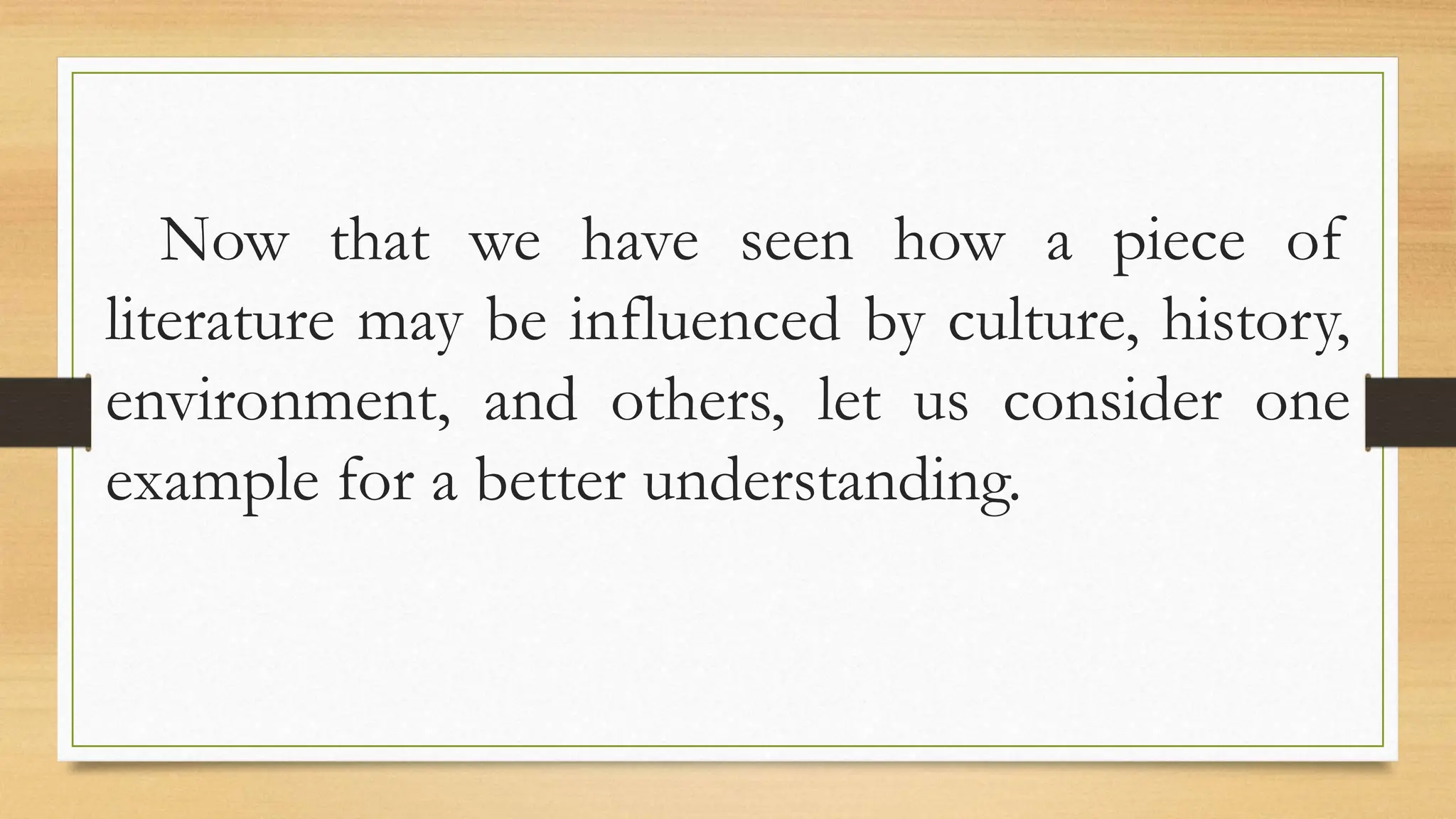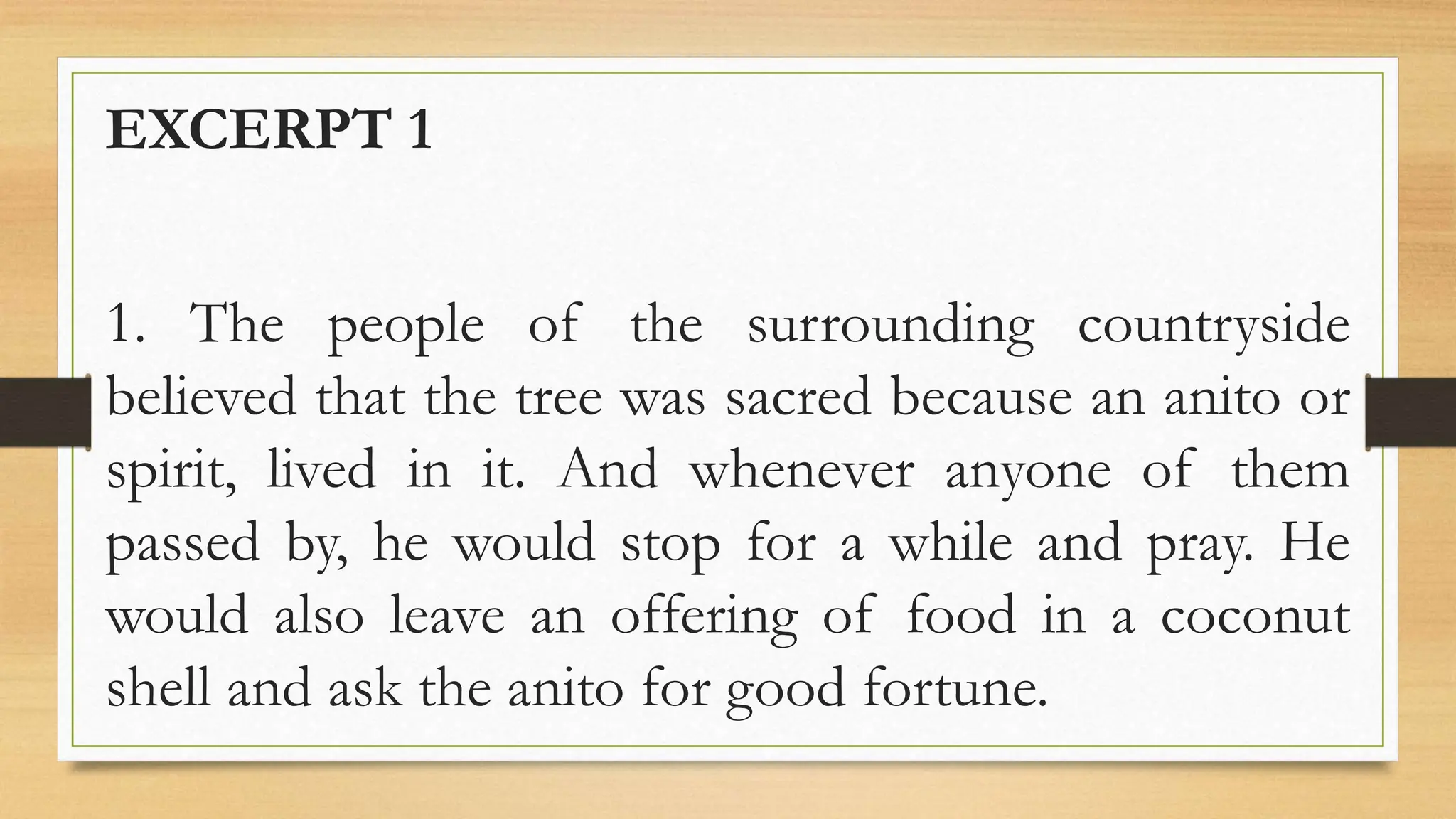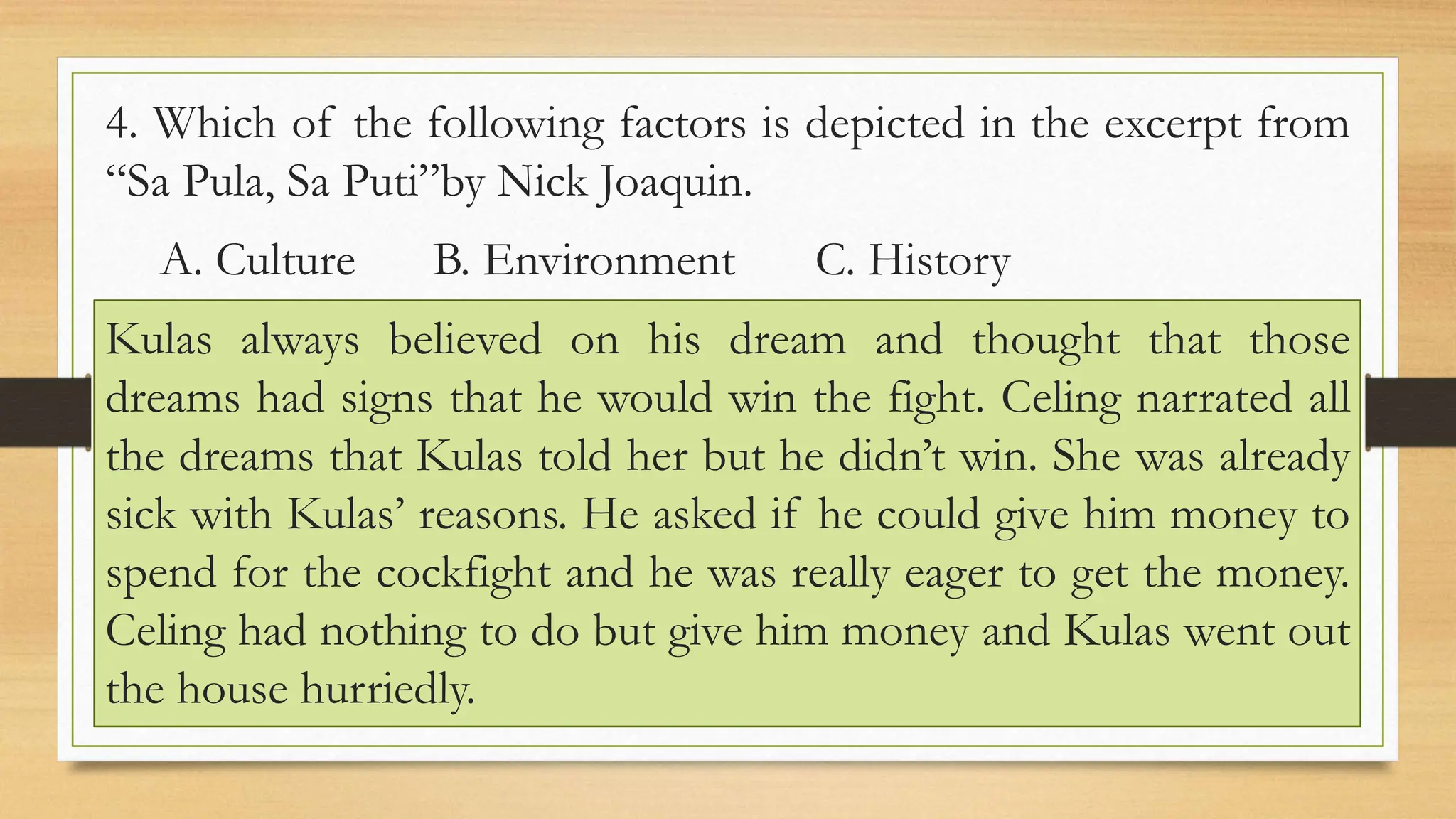The document discusses how literature can be influenced by culture, history, and environment. It provides the example of Jose Rizal's novels Noli Me Tangere and El Filibusterismo, which were influenced by the cruelty of Spanish colonial rule in the Philippines. It also analyzes the one-act play "Sa Pula, Sa Puti" by Francisco Rodrigo, noting how it comments on social issues like gambling addiction through depicting a character obsessed with cockfighting. The play reflects Filipino culture and the belief that luck can change one's fortunes.

















































